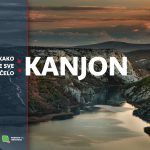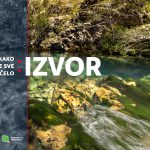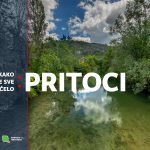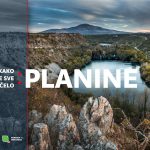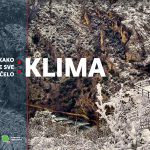Climate
The Krka is a paradox of the bare and hard limestone and karst permeable to water and increasing drought, and the soft and green dolomite rock with the fragile marl in the depressions.
In the area of this one river, the climate also has two faces. The Krka River runs from Knin to Šibenik, and the climatic characteristics are analysed on the basis of data from climate stations situated in those two towns. With an average of 2647 hours of sunlight per year in Šibenik and 2377 hours in Knin, the area of Krka National Park is amongst the sunniest parts of Croatia.
In the Krka River valley, the maritime influence penetrates deep inland, significantly affecting the climate conditions throughout the entire park area. The paleoclimatic conditions were important in shaping the relief, particularly the valley depressions, during the alternating glacial and interglacial periods. During warmer periods, travertine barriers were created and the river expanded into lake-like sections upstream, thus reducing the process of erosion. On the other hand, during colder periods, especially glacial periods, when the quantity of precipitation increased and temperatures dropped, fluvial erosion was increased. In the middle of the glacial period, there was about 20% more precipitation and temperatures were 4 to 5°C colder than they are today. The second half of the glacial period was marked by a reduction in precipitation (about 20% lower than today’s values until 20,000 years ago) due to the accumulation of ice in the Dinaric region and the lowering of air temperatures (to about 12°C lower than the present day values). According to the Köppen classification, the climate in the area of Krka National Park has been classified as Csa, indicating a moderately warm, Mediterranean wet climate, with dry and hot summers.
The area of Krka National Park experiences all four seasons. Winters have more cloud cover and precipitation, while summers are clear and sunny. The mean annual air temperature in Knin is 13°C, two degrees less than in Šibenik, due to the influence of the sea. The mean air temperature in the year’s coldest month, January, is about 7°C in Šibenik and 5°C in Knin, while in the warmest month, July, mean air temperature is 25°C in Šibenik and 23°C in Knin.
Due to the maritime influence, which is slow to cool, autumn is warmer than spring. There is little likelihood of very low temperatures. The proximity of sea and surrounding mountains affect the quantity of precipitation. The most precipitation occurs during autumn and winter, with a third of the total annual rainfall between October and December. During this time, the rivers are heavy with waters. The least rain falls in summer, especially July. Snow is very rare in this area, particularly along the coast.
In addition to being the sunniest, the Krka National Park area is also among the area with the clearest skies in Croatia. Spring is sunnier than autumn, and the least sun is seen in December and January, when the days are shortest with the most cloud cover. The winds of the colder seasons dominate in the Krka River valley: the northwesterly bura (bora) and the southeasterly jugo (scirocco). The bura wind is pronounced throughout the entire park area, while the jugo is strong only in the lower reaches of the Krka River. In summer, the light, daytime, westerly or southwesterly wind called the maestral (mistral) blows on clear days.



